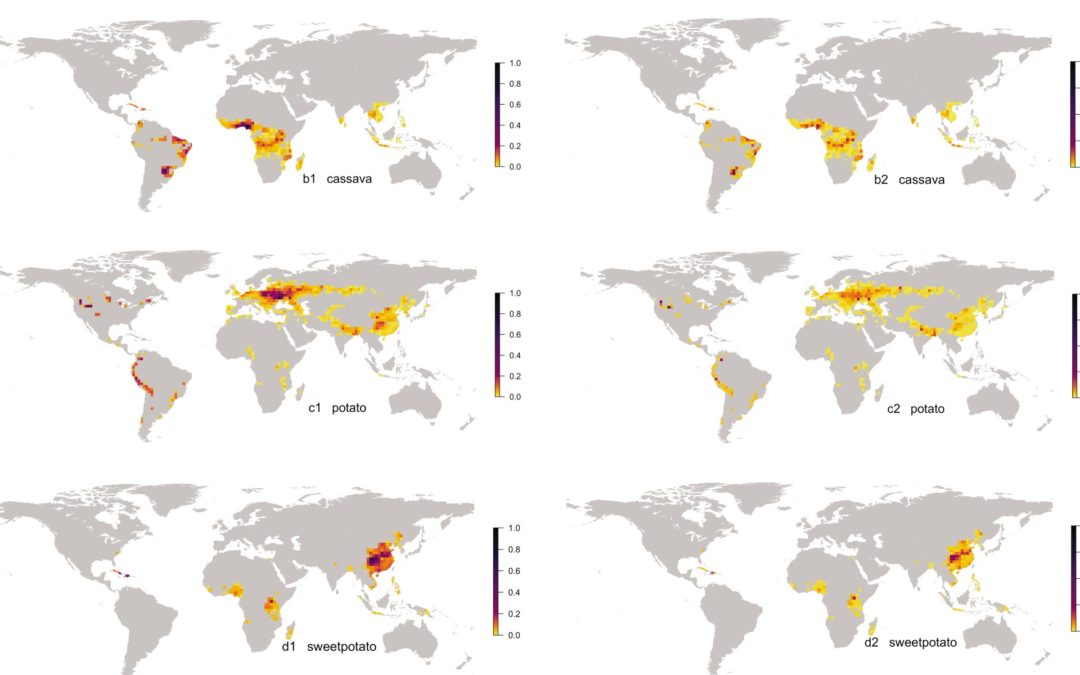Mapping Global Cropland Connectivity for Managing Crop Pest and Disease Risks
CGIAR researchers at Alliance Bioversity-CIAT (Guy Blomme, Mónica Carvajal-Yepes, and Wilmer J. Cuellar), IITA (Danny L. Coyne, P. Lava Kumar, James P. Legg), CIP (Monica Parker, Elmar Schulte-Geldermann, and Kalpana Sharma) co-authored an article investigating the global networks of cropland connectivity. The study, supported by CGIAR Research Program on Roots, Tubers, and Bananas (RTB), applied geospatial network analysis on global cropland and crop mapping datasets, including IFPRI’s MapSPAM, for evaluating the global networks of cropland connectivity for key vegetatively propagated crops (banana and plantain, cassava, potato, sweet potato, and yam). The article also presented a framework for constructing the Cropland Connectivity Risk Index, which can be used to identify strategically important locations for monitoring the potential pest and disease epidemics in the future.

Abstract
The geographic pattern of cropland is an important risk factor for invasion and saturation by crop-specific pathogens and arthropods. Understanding cropland networks supports smart pest sampling and mitigation strategies. We evaluate global networks of cropland connectivity for key vegetatively propagated crops (banana and plantain, cassava, potato, sweet potato, and yam) important for food security in the tropics. For each crop, potential movement between geographic location pairs was evaluated using a gravity model, with associated uncertainty quantification. The highly linked hub and bridge locations in cropland connectivity risk maps are likely priorities for surveillance and management, and for tracing intra-region movement of pathogens and pests. Important locations are identified beyond those locations that simply have high crop density. Cropland connectivity risk maps provide a new risk component for integration with other factors—such as climatic suitability, genetic resistance, and global trade routes—to inform pest risk assessment and mitigation.
Yanru Xing, John F Hernandez Nopsa, Kelsey F Andersen, Jorge L Andrade-Piedra, Fenton D Beed, Guy Blomme, Mónica Carvajal-Yepes, Danny L Coyne, Wilmer J Cuellar, Gregory A Forbes, Jan F Kreuze, Jürgen Kroschel, P Lava Kumar, James P Legg, Monica Parker, Elmar Schulte-Geldermann, Kalpana Sharma, Karen A Garrett, Global Cropland Connectivity: A Risk Factor for Invasion and Saturation by Emerging Pathogens and Pests, BioScience, biaa067, https://doi.org/10.1093/biosci/biaa067
August 4, 2020
CGIAR-CSI





